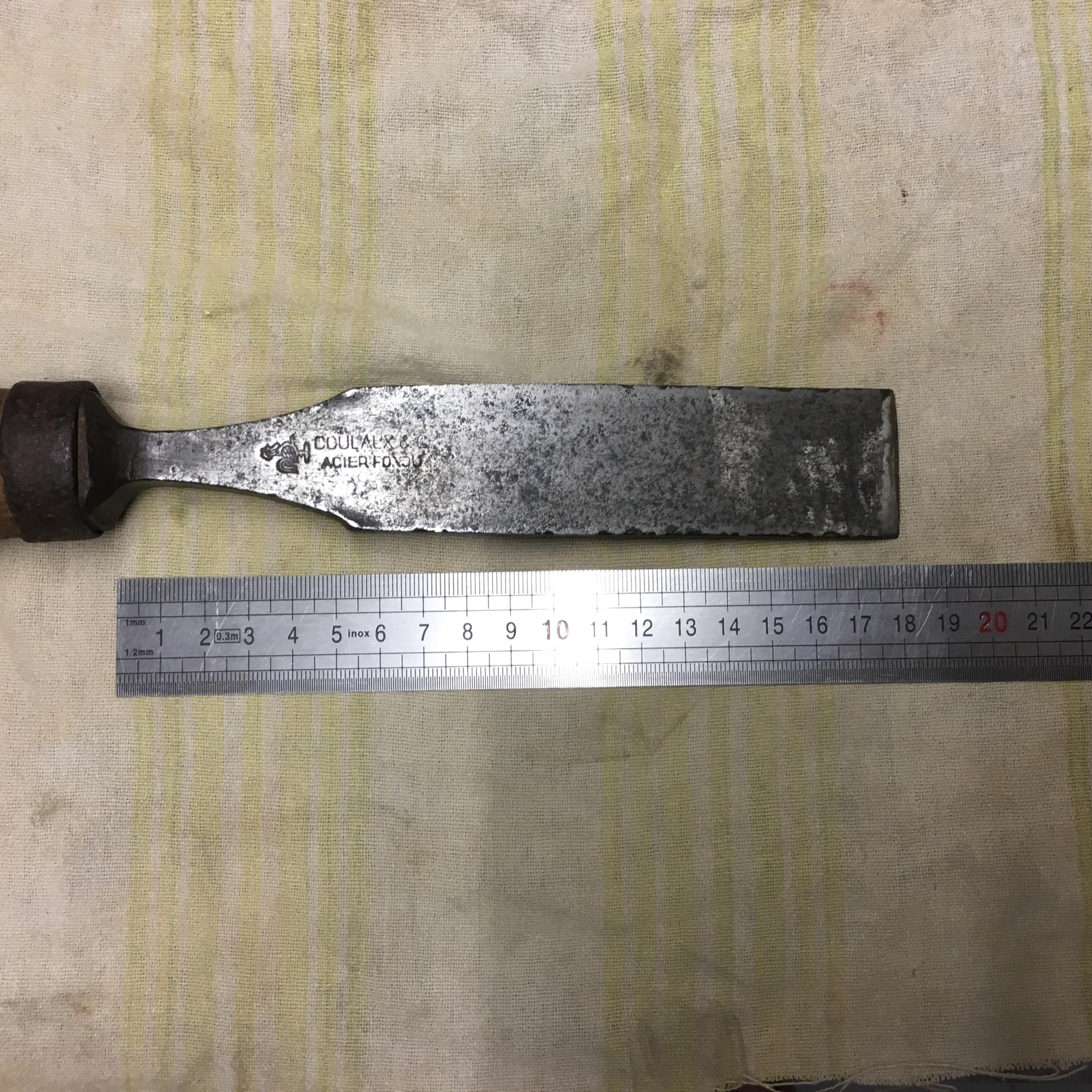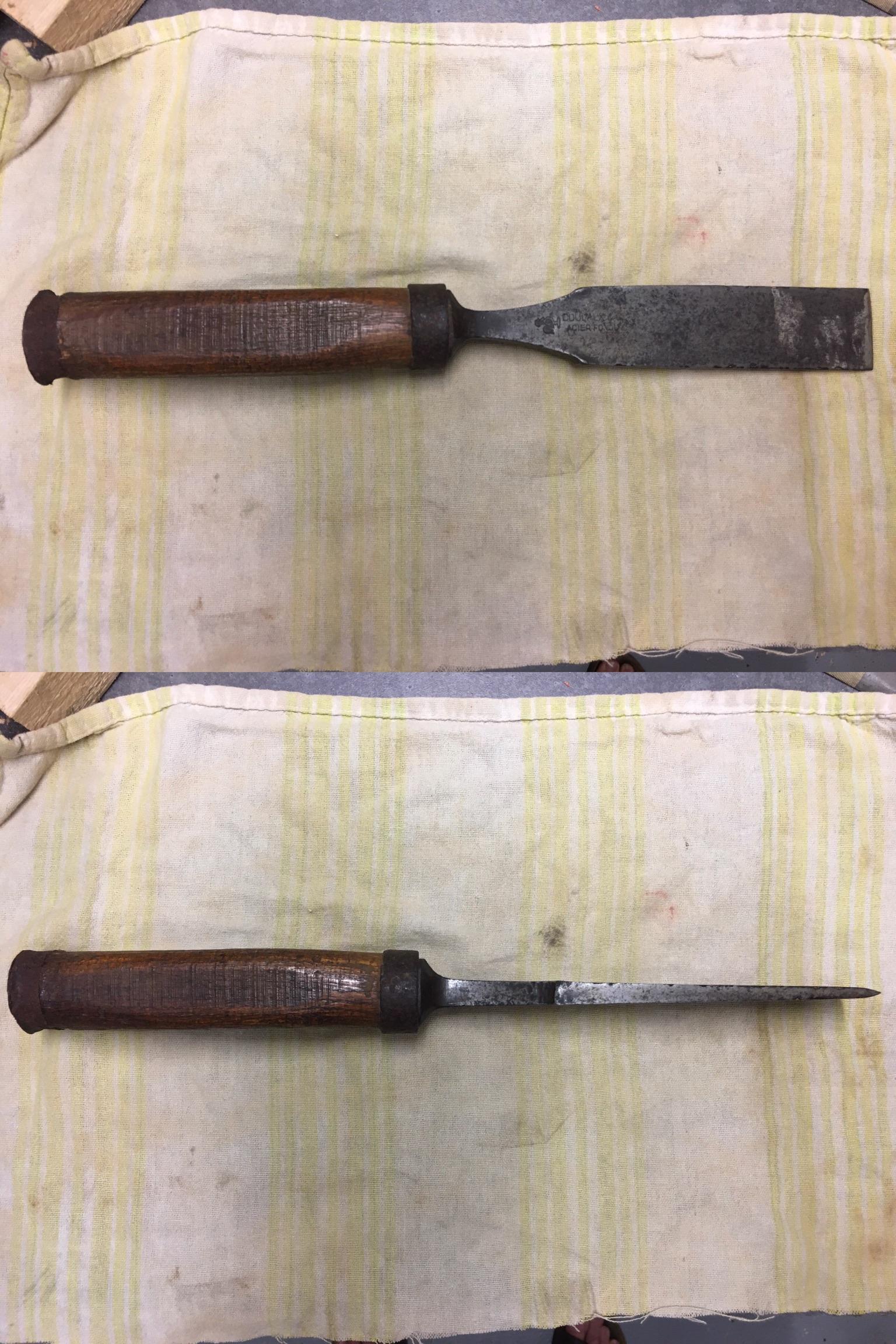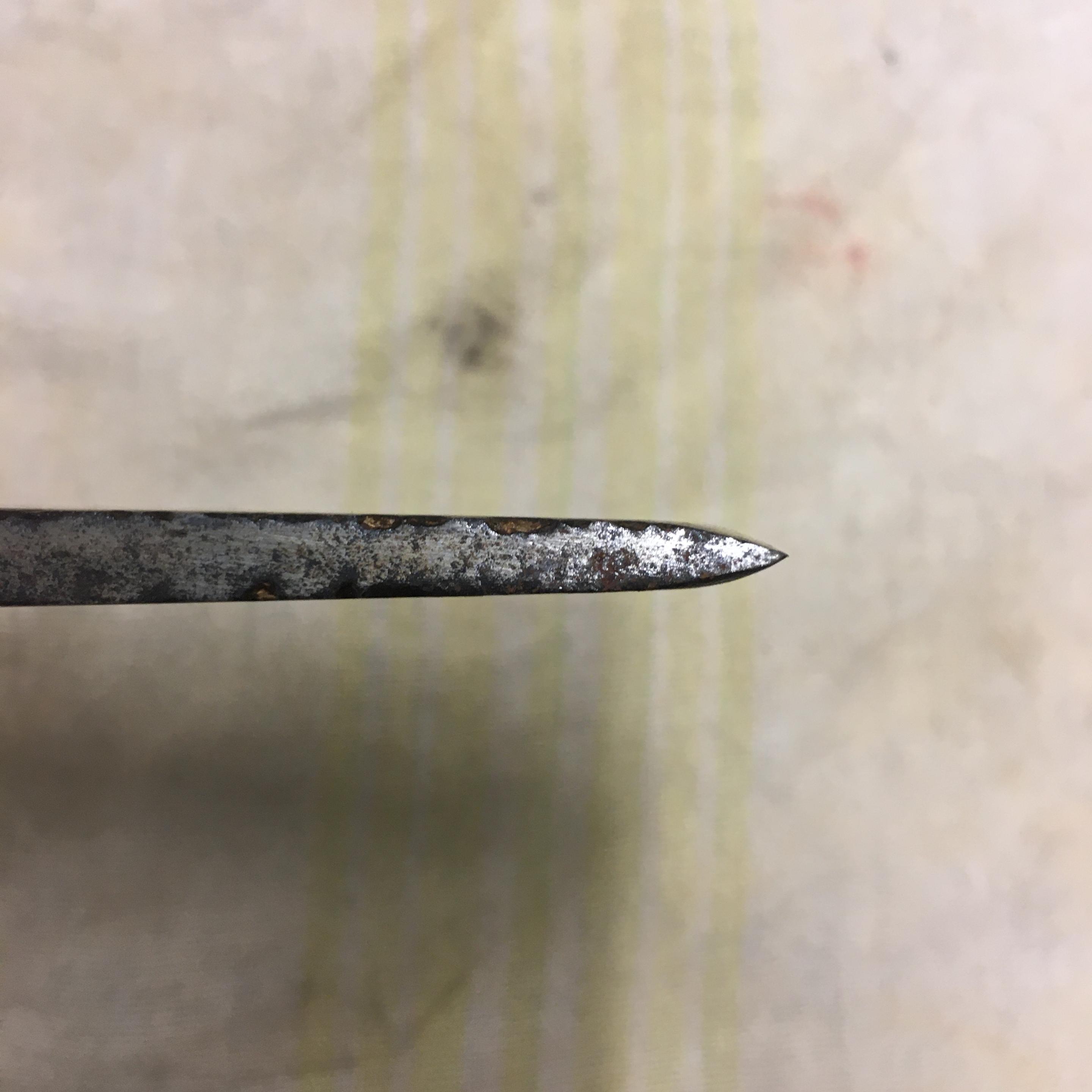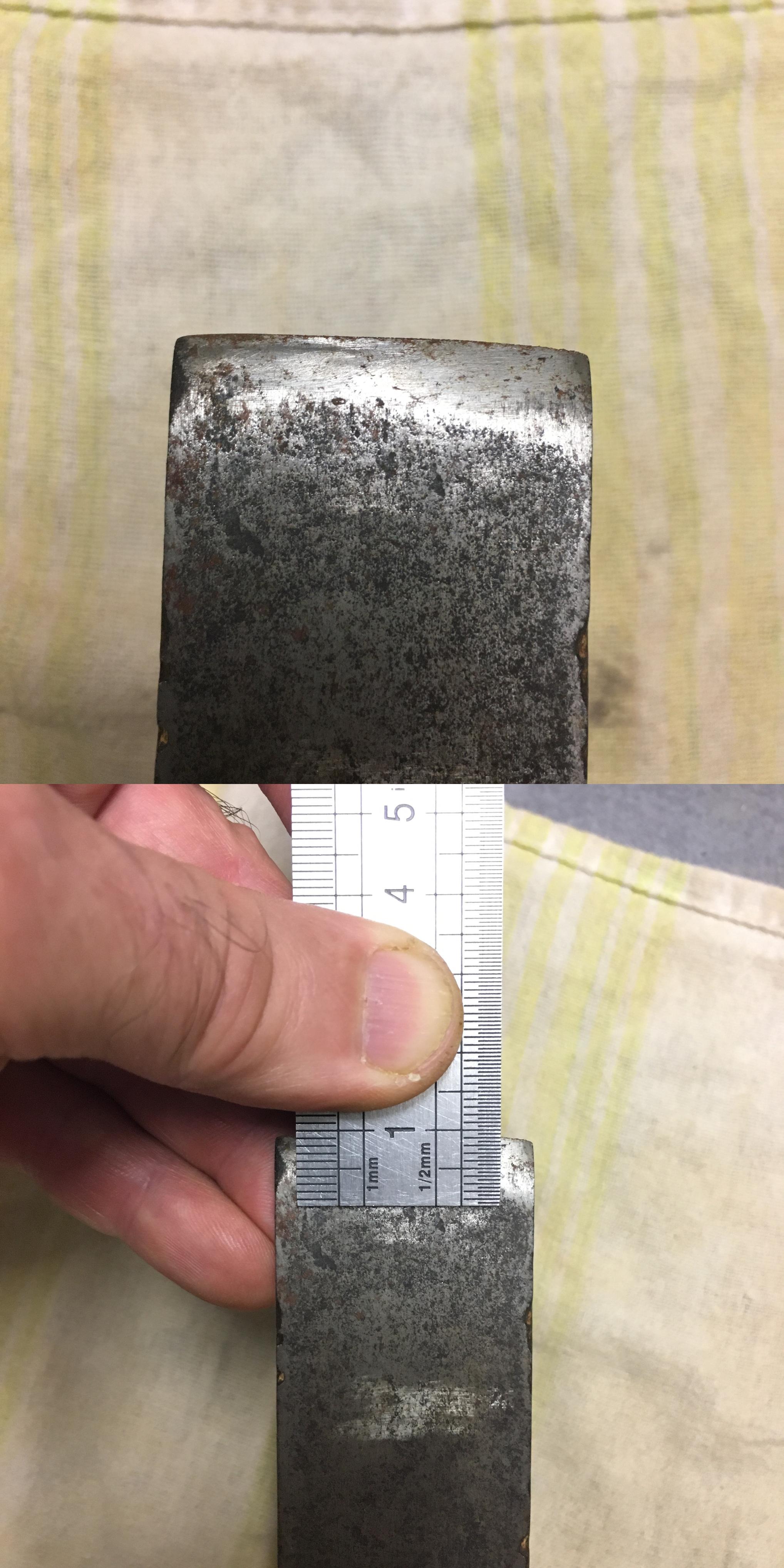Another big firmer/registered (whatever) chisel to restore at some point.
-
Another big firmer/registered (whatever) chisel to restore at some point. A Coulaux. One of Alsace’s historical tool forges long gone.
This chisel’s been through it. I’d guess it was 2 or 3 cm longer at the start.
Handle not original.
Unfortunately, someone ground both sides of the edge; probably used as a wedge (wood splitter). I’ll have to grind off a full centimeter before doing anything.
First a citric soak to see how much hardened length is still there.
-
 undefined rag. Gustavino Bevilacqua ha condiviso questa discussione
undefined rag. Gustavino Bevilacqua ha condiviso questa discussione
-
Another big firmer/registered (whatever) chisel to restore at some point. A Coulaux. One of Alsace’s historical tool forges long gone.
This chisel’s been through it. I’d guess it was 2 or 3 cm longer at the start.
Handle not original.
Unfortunately, someone ground both sides of the edge; probably used as a wedge (wood splitter). I’ll have to grind off a full centimeter before doing anything.
First a citric soak to see how much hardened length is still there.
The good news, if it really is a fermoir, and not a hack-made one from a good chisel: I don’t have to grind this down.
But, it would sensibly seem to me that a chisel with a two-sided bevel edge would have an iron that tapers similarly from bolster to edge, like a dagger. Mine, however, has one flat side along tool axis, like the bottom of a chisel, and one tapered side, like a chisel top. Is that normal for a proper French fermoir? I don’t know.
-
Another big firmer/registered (whatever) chisel to restore at some point. A Coulaux. One of Alsace’s historical tool forges long gone.
This chisel’s been through it. I’d guess it was 2 or 3 cm longer at the start.
Handle not original.
Unfortunately, someone ground both sides of the edge; probably used as a wedge (wood splitter). I’ll have to grind off a full centimeter before doing anything.
First a citric soak to see how much hardened length is still there.
Need to find a Coulaux catalogue, I guess. In the meantime, this remains a fermoir until proven otherwise. I’ve got other big chisels.
Nosban also defines the fermoir back in the early 1800s (merci, Nico). At that point the blades were made of three layers fused together; two iron on the outsides and a steel in the middle for the edge.
That further suggests to me that a true fermoir would have tops/bottoms equally tapered like daggers, not sided differently.
¯\_(ツ)_/¯



